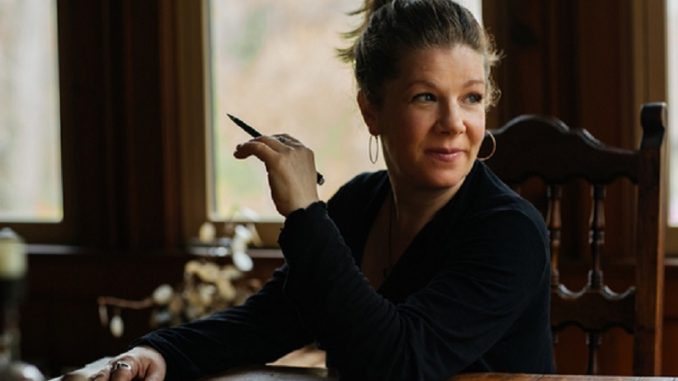
 In ‘How to Write a Song That Matters‘ Dar Williams sets out to guide the aspiring songwriter – who wants to get a bit deeper in their writing than moon/spoon/June – and help them to achieve their goal of turning their thoughts and experiences into something more meaningful. That Dar Williams should produce such a text has a sense of the inevitable to it. There is the obvious reason – that Dar Williams knows how to write a song that matters and can be serious, mysterious or humorous – sometimes all in the same song – and yet can still convey her meanings to the listener. And then there’s the other reason – Dar Williams regularly leads songwriting retreats under the banner ‘How to Write a Song That Matters.‘ This book, then, is something of a distilling of the expertise in teaching and guiding songwriting that Dar Williams has gained through practice, and gives a sense at least of what such a retreat might be like. Inspiring is the word that springs to mind.
In ‘How to Write a Song That Matters‘ Dar Williams sets out to guide the aspiring songwriter – who wants to get a bit deeper in their writing than moon/spoon/June – and help them to achieve their goal of turning their thoughts and experiences into something more meaningful. That Dar Williams should produce such a text has a sense of the inevitable to it. There is the obvious reason – that Dar Williams knows how to write a song that matters and can be serious, mysterious or humorous – sometimes all in the same song – and yet can still convey her meanings to the listener. And then there’s the other reason – Dar Williams regularly leads songwriting retreats under the banner ‘How to Write a Song That Matters.‘ This book, then, is something of a distilling of the expertise in teaching and guiding songwriting that Dar Williams has gained through practice, and gives a sense at least of what such a retreat might be like. Inspiring is the word that springs to mind.
Starting from the position that anyone can be a songwriter, even someone who can’t play an instrument, Dar Williams teases out ways to overcome perceived obstacles and mental barriers with practical approaches to inviting inspiration and creativity into one’s ways of thinking. This may be something as simple as deliberately cultivating a poetic response to words – as she says “the nuclear family” means one’s immediate family. Poetically “nuclear family” can mean many other things.” Having once started down that path Williams then offers suggestions on ways to take an idea and set it to music with some “simple” music theory which starts with help on which chords naturally go together, which ones go together nearly enough that they can be co-opted into a song and which chords inspire certain moods within a song. Later in the book this is expanded on with short sections on using flats and sharps to make triad and four-note chords which borrows an approach from Williams’ fellow retreat leader Rick Gedney – it’s a section that would probably make more sense with a guitar in one’s hands whilst reading but it does offer a pathway into more complex musical options.
There are chapters covering how to develop a song, and when to recognise that it is finished – and when to recognise that actually it is not finished, or was finished a while ago – and how to answer the question “do I need a bridge?” and if the answer is in the affirmative how to go about constructing one. And there are chapters on how to grasp the opportunities to perform a song in public – whether this be at open-Mic’s or in small songwriting circles or some other venue. These cover emotional aspects – such as how to consider and respond to criticism or external input – and practical ones such as finding a venue, and what is the minimum sound equipment required, to start an Open Mic if no suitable one already exists locally. Along the way there are plenty of anecdotes drawn from Dar Williams’ own songwriting, or from one of her retreats, which illustrate the processes discussed in the book – and it’s quite fascinating to see how her own approaches have changed with time.
Physically the book is laid out in thematic sections with very short chapters – typically only a page or two long – which encapsulate the point being discussed, very much in the style of a self-help book and an approach that leads to easy bookmarking of thoughts and points that one might wish to revisit whilst developing a song. The final proof of the value of ‘How to Write a Song That Matters‘ might be regarded as how many satisfying songs are written by those who read the book, but as well as being an inspiring read it is worth the time to digest even for someone who only wants to better understand Williams’ songwriting practice.


